RICHMOND — Luke Lucier and Becky Deering are used to drivers slowing down on Route 197 to take a look at their home.
Some even pull into the driveway.
Others — and this makes Deering a little nuts — slow way down in the middle of the road while someone in the back seat takes a photo.
“If we’re here and we aren’t doing anything, they should just stop in,” Lucier said.
You have to pay attention or you’ll miss it. At 220 square feet, including the loft, their green-shingled home with white trim is a tiny house, which they built and moved to the concrete slab just across from the Cotton Cemetery in May.
For Lucier, 35, and Deering, 29, making the switch from their rental home in southern Maine to this home was neither fast nor impulsive.
“I think my dad mentioned it, but I didn’t put much thought into it,” Lucier said. He said that might have been about five years ago.
But the idea slowly took root.
“I pushed for it,” Deering said. “The freedom it gives us most people our age don’t have.”
Lucier is a self-employed carpenter in Cape Elizabeth, and as a side venture has started Tiny Houses of Maine. Deering is a veterinarian technician in Freeport.
“I looked into mortgages to get a house,” Deering said Sunday in her bright living room, but spending $50,000 on a down payment didn’t seem like the best option. Plus, she said, whatever they could afford would require time, effort and more money, in addition to their mortgage, to renovate.
A tiny house, for all its small size, offered quite a bit in exchange for their relatively modest investment of $35,000 to $40,000 for materials and fixtures, for which they paid out of pocket.
Generally, tiny houses range in size from 100 square feet to 400 square feet. They are, in execution, masterpieces of logic and efficiency. Because there is little space, there’s little space to waste. The main floor is home to living room, dining room, office (all in the same space), kitchen and bathroom, The upper floor, a sleeping loft, accommodates a king-size futon and clothing storage. Even the laundry is efficient in a combined washer-dryer. Heating and cooling the space is inexpensive and pretty straightforward with an air exchange system, and cleaning it is a snap.
“We can go out hiking on the weekend, come home and clean the house. In 10 minutes, it’s done,” Lucier said.
That convenience the is the fruit of a lot of labor. First, they had to find someone to fabricate the trailer that could bear the load of the house. And then they had to take a hard look at their lives, their stuff and how much space they would need to do even the simplest things.
“I made him pretend to shave,” Deering said. The point was trying to figure out how much space ought to be dedicated to the bathroom to be comfortable, In the end, they were able to shave a bit of space off the bathroom and add it to the kitchen, where they spend more time.
They had to pay attention to the size of the envelope of the house to avoid being oversize in transporting it.
And they had to pare down their personal belongings and pare down some more. “I threw a lot of stuff out,” Lucier said.
“Who needs 75 T-shirts or more than two pairs of shoes?” Deering wondered. “This has freed us up emotionally from the stress and toll all the stuff and everything to keep it up and spending the money takes.”
They feel as though they didn’t give up anything, though. Lucier still has the posters he collected while he was in the Navy, for instance, and there’s storage for books and their gear.
They chose Richmond because the town seemed more accepting of a tiny house than other communities.
Tiny houses are scattered across the state. In 2013, Waterville became host to a microhome, which at 624 square feet, is large for a tiny house.
Richmond code enforcement officer James Valley said a tiny house would be just about the only option for the property where Lucier and Deering planted their tiny home because of the stream that runs along the back side of the lot. The only requirement he imposed was putting an apron around the base of the house to cover up the trailer and making sure it had a second exit.
Other communities are looking at the tiny-house phenomenon, but they are not yet committing.
In Portland, the city has posted a document on its website, detailing its position on tiny houses because of the number of questions city staff members have received. In part it reads: “The city is actively looking at the issue of tiny houses and what role they might play in helping address our housing needs. The biggest challenge appears to be the state building code, which the city is required to utilize. We are looking into whether we might lobby for changes in MUBEC (Maine Uniform Building and Energy Code) to allow more flexibility for tiny homes, but such changes would not happen quickly, and could require legislation.”
That level of interest is not present in other areas of the state. In Augusta, code enforcement officer Rob Overton said he hasn’t seen any paperwork on tiny houses cross his desk.
Randy Gray, Skowhegan’s code enforcement officer, said he hasn’t seen any in his town.
“There are some small efficiencies and apartments, but there are not any (tiny houses) that I know of,” Gray said.
What he knows about the tiny house he has learned, as have many others, on TV. Shows such as “Tiny House Nation,” “Tiny House Builders” and “Tiny House, Big Living” populate networks such as FYI and HGTV.
In Maine, he said, one room of a house has to be at least 70 square feet. And like traditional houses, tiny houses would have to comply with the state building code. And if they do, he said, he wouldn’t stop one from being built, although they seem more like vacation homes than permanent residences.
“A permanent residence has to be a on a solid foundation,” he said.
Several of the tiny house programs highlight the mobile nature of the homes, and in that way, Gray said, they are no different from recreational vehicles. “I live in an RV all summer long in the campground,” he said, but he doesn’t see it or a tiny home as a year-round residence.
“When we’re using our RV, it gets you out doing other things,” he said. “I live with a redhead, so this wouldn’t be my way of living.”
Deering said living in a small space requires a strong relationship and the ability to talk things out.
Deering and Lucier don’t have plans to hit the road with their home. Tied to town water and sewer, they like it just where it is.
Their work is not quite done. Lucier has plans to build a storage space on the property to store his tools, and Deering is planning a garden for next year.
They are also going to have train friends and family not to bring them things for the house.
Lucier said his father gave him a flag for the house, and that’s fine.
“My family is huge and they like to give gifts,” Deering said. “I have had to train them by saying, ‘I need this,’ ‘I don’t want that.'”
She said she was excited that her mother gave her a couple of birdhouses. If anyone else wants to give a gift, she said, forget the rice cookers and kitchen appliances; instead, she recommends perennial garden plants.
Jessica Lowell — 621-5632
Twitter: @JLowellKJ
Send questions/comments to the editors.

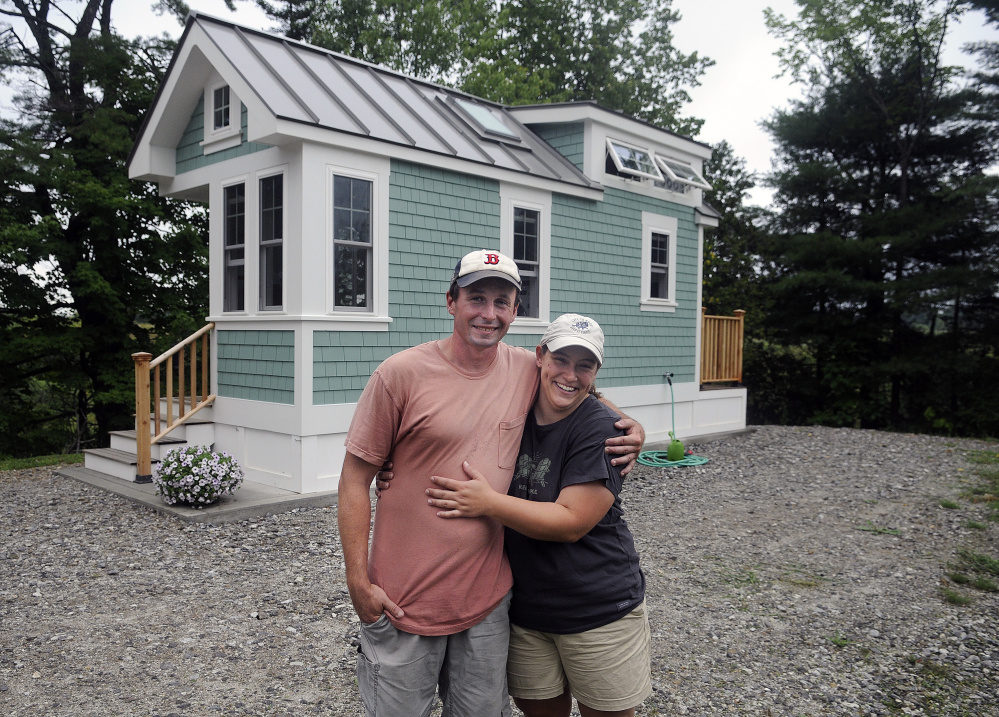
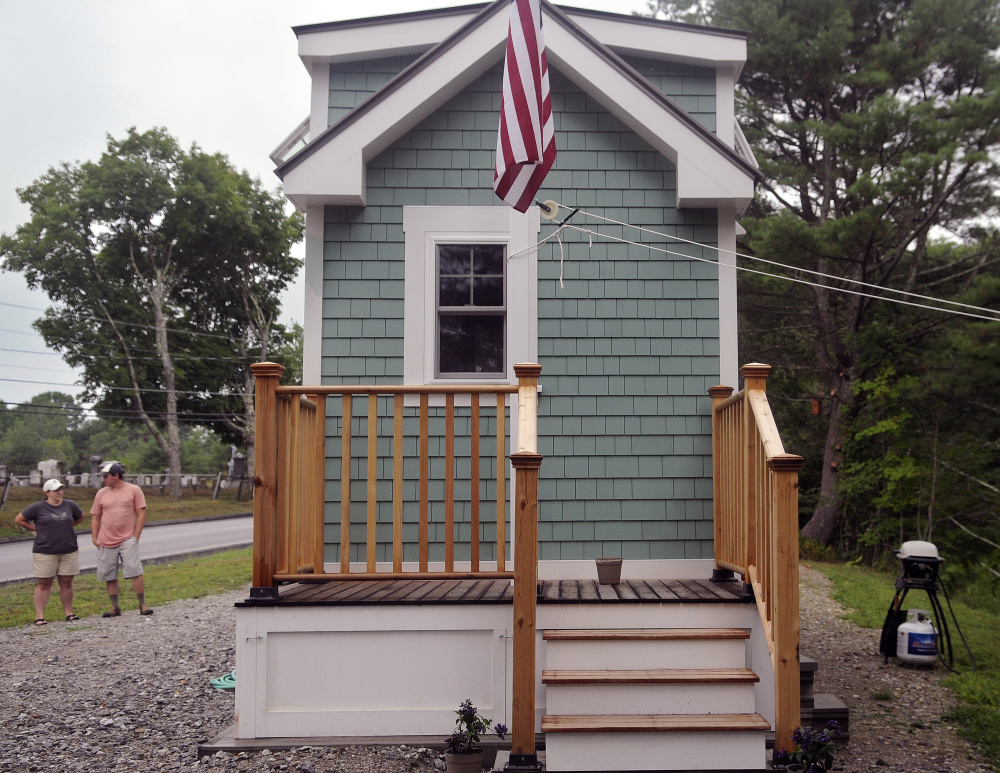
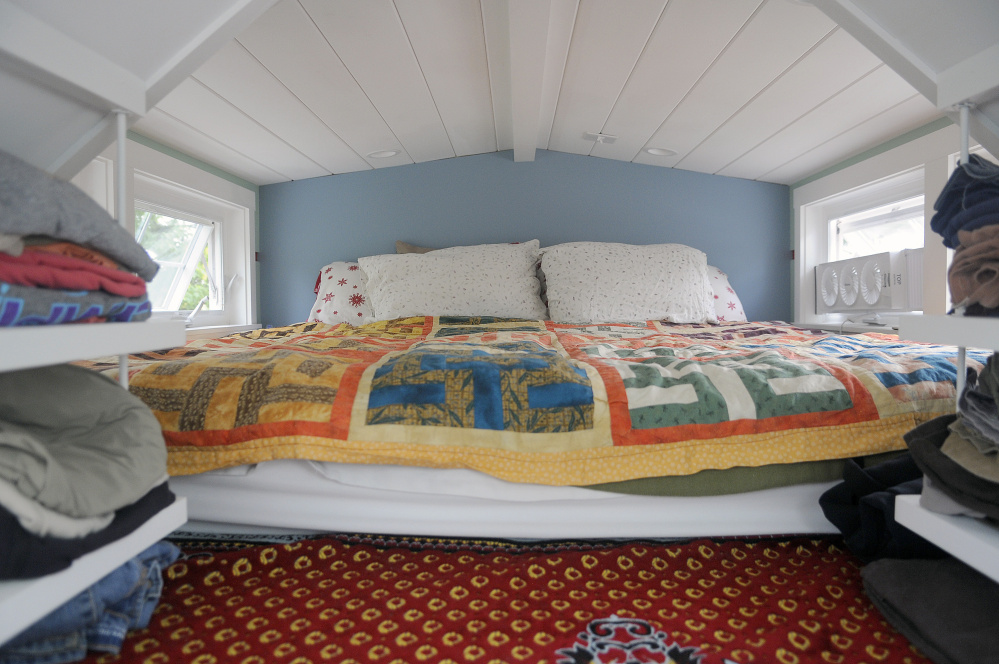
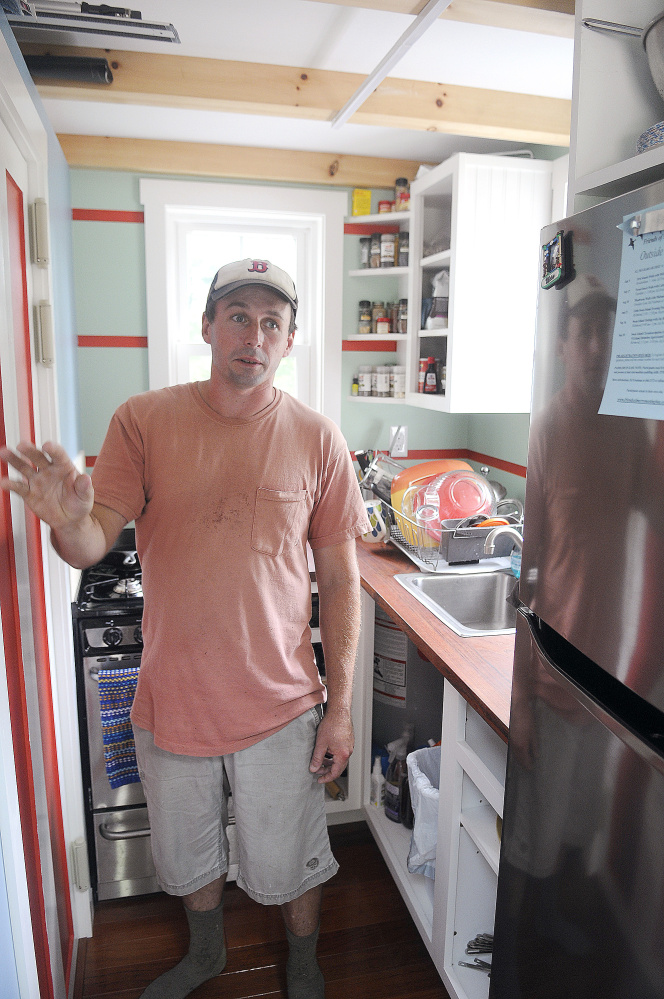
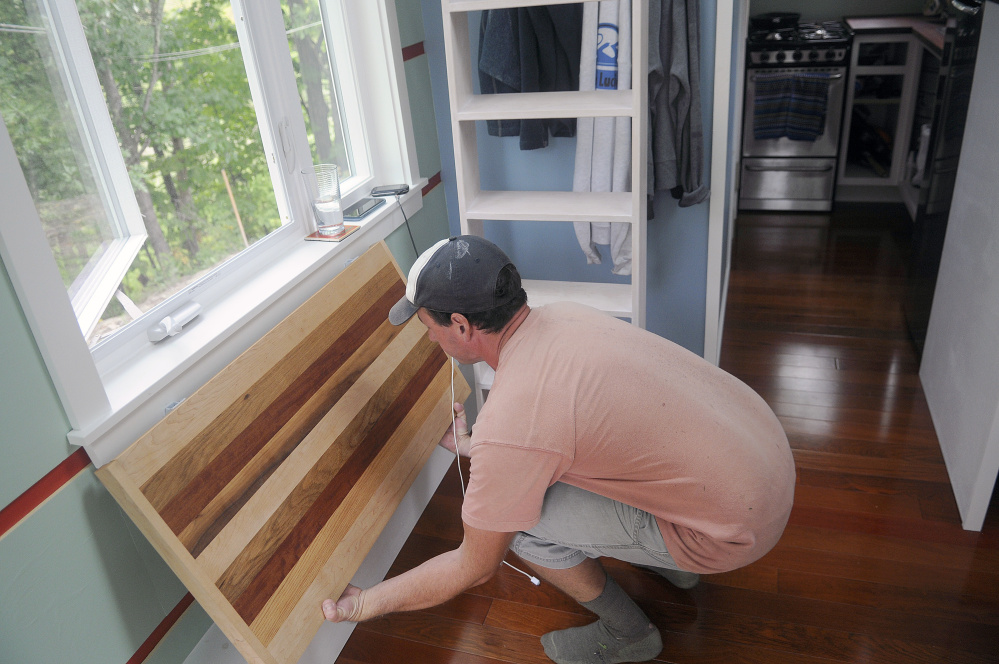

Success. Please wait for the page to reload. If the page does not reload within 5 seconds, please refresh the page.
Enter your email and password to access comments.
Hi, to comment on stories you must . This profile is in addition to your subscription and website login.
Already have a commenting profile? .
Invalid username/password.
Please check your email to confirm and complete your registration.
Only subscribers are eligible to post comments. Please subscribe or login first for digital access. Here’s why.
Use the form below to reset your password. When you've submitted your account email, we will send an email with a reset code.